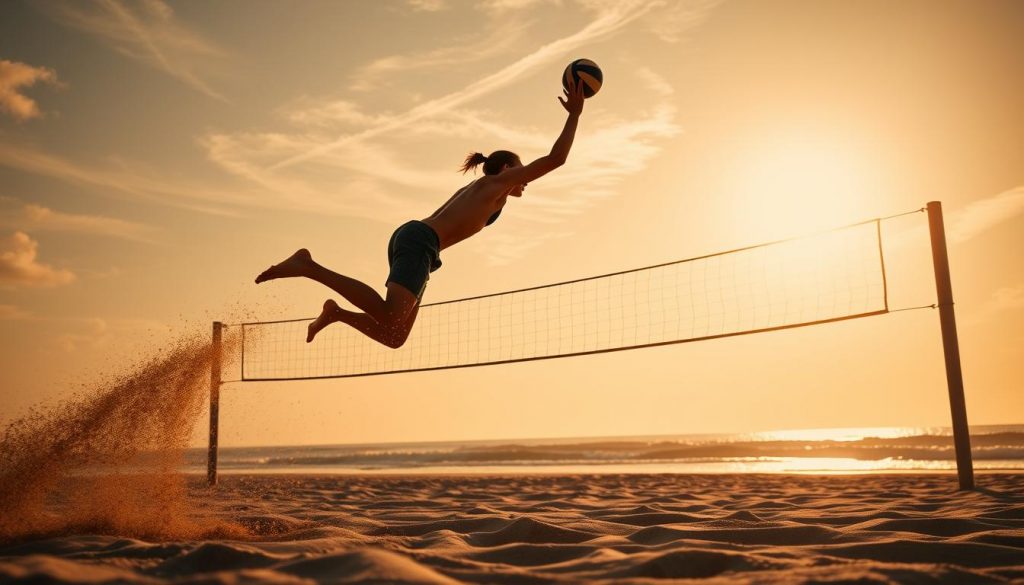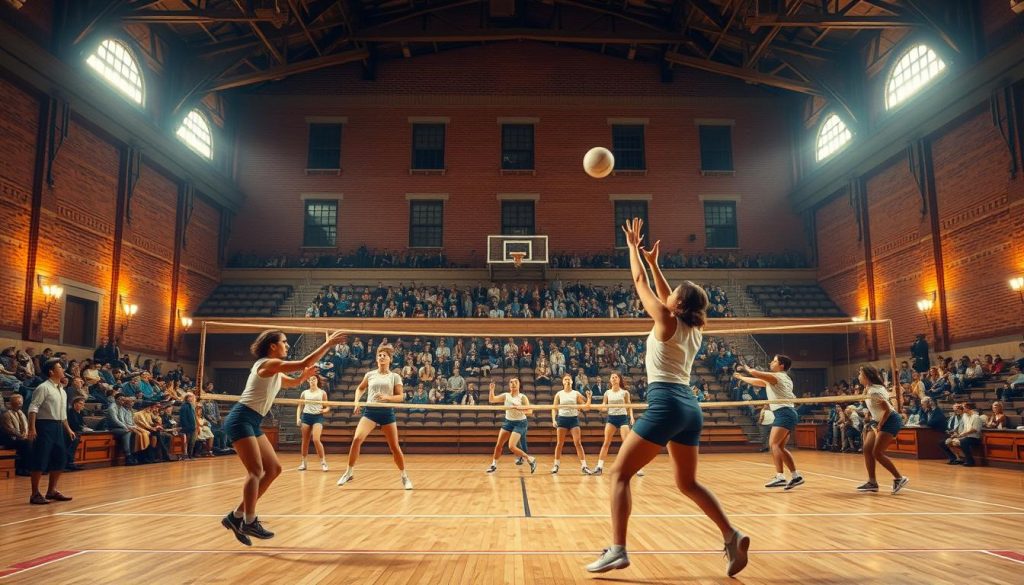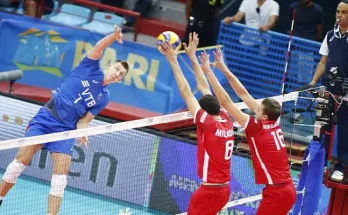Volleyball is a dynamic and fast-paced sport enjoyed by millions worldwide. While it’s played in various settings, two versions stand out: one on sand and the other indoors. Each has its own rules, team sizes, and equipment, making them distinct yet equally exciting.
Indoor volleyball typically involves larger teams and is played on a hard court. On the other hand, the sand version features smaller teams and a softer playing surface. The differences extend to the ball, attire, and even the scoring systems, adding unique challenges to each game.
In this article, I’ll dive into the specifics of both versions. From court dimensions to game strategies, I’ll explore what makes each one special. Whether you’re a seasoned player or a curious fan, this comparison will give you a deeper appreciation for the sport.
Overview of Indoor and Beach Volleyball
From its humble beginnings, volleyball has branched into two popular formats. The sport, invented in 1895, has evolved significantly over the years. Today, it’s played in two main versions: indoor and beach volleyball. Both formats share the same roots but have developed unique characteristics that set them apart.
Indoor volleyball is played on a hard court with six players per team. Each athlete has a specialized position, such as setter, libero, or hitter. This version emphasizes teamwork and strategic play. On the other hand, beach volleyball features two players per team on a sand court. The softer surface and smaller team size demand versatility and endurance from each athlete.
The history of these versions is fascinating. Indoor volleyball became an official Olympic sport in 1964, while beach volleyball gained Olympic recognition in 1996. The latter originated on the beaches of California in the 1920s, where it quickly gained popularity. Both formats have since built loyal communities of players and fans.
Athletes often choose one version based on their preferences. Some enjoy the team dynamics of indoor play, while others thrive in the individual focus of beach volleyball. Despite their differences, both versions celebrate the spirit of the sport and its global appeal.
| Aspect | Indoor Volleyball | Beach Volleyball |
|---|---|---|
| Team Size | 6 players | 2 players |
| Playing Surface | Hard court | Sand court |
| Player Roles | Specialized positions | Versatile roles |
I’m always amazed by how volleyball has diversified over the years. Whether on the court or the beach, the sport continues to inspire athletes and fans alike. Its ability to adapt and grow is a testament to its enduring appeal.
Game Settings: Court and Environment Differences
The playing environment shapes the essence of any sport, and volleyball is no exception. The court and its surroundings are crucial in defining how the game is played. Indoor and beach formats have distinct settings that influence gameplay in unique ways.
Indoor courts measure 18 meters by 9 meters, providing a larger playing area. This size accommodates six players per team, allowing for specialized roles and strategic plays. Beach courts, on the other hand, are smaller at 16 meters by 8 meters. The reduced space demands versatility from the two players on each side.
Net heights also differ between the two formats. Indoor nets are set at 2.43 meters for men and 2.24 meters for women. Beach nets are slightly lower, at 2.43 meters for men and 2.24 meters for women. These variations affect the game’s dynamics and player strategies.
Weather conditions add another layer of complexity to beach volleyball. Wind, sun, and sand can impact ball trajectory and player movement. Indoor play eliminates these variables, offering a more controlled environment. This contrast highlights the adaptability required for outdoor play.
The court and ball are central to setting up the game. Indoor balls are heavier and designed for controlled play, while beach balls are lighter to account for wind resistance. These differences shape how points are scored and sets are structured.
Playing point by point, the impact of these settings becomes clear. The court’s layout and environmental factors contribute significantly to the overall experience. Whether indoors or on the sand, the game’s essence remains, but the challenges and strategies evolve.
Key Elements Unique to Indoor Volleyball
Indoor volleyball stands out for its structured gameplay and team dynamics. Unlike its beach counterpart, this version emphasizes specialized roles and rotational strategies. Each player has a specific position, such as setter, hitter, or libero, contributing to the team’s success.
The indoor volleyball court is designed to support these roles. Its larger size accommodates six players, allowing for intricate plays and strategic movements. The hard surface ensures consistent ball control, making it ideal for precise techniques.
Player techniques are integral to the indoor game. Hand skills, like setting and spiking, require precision and practice. The libero, a defensive specialist, showcases the importance of agility and quick reflexes. These elements highlight the sport’s technical depth.
Indoor volleyball has a more regimented structure compared to beach volleyball. Rules like rotational orders and substitutions add layers of strategy. This structure fosters teamwork and coordination, making it a fascinating sport to watch and play.
From my perspective, the strategic sophistication of indoor volleyball is unmatched. The combination of specialized roles, precise techniques, and structured gameplay creates a unique experience. It’s a sport that celebrates both individual skill and team synergy.
Unique Aspects of Beach Volleyball
Beach volleyball brings a unique energy that sets it apart from other sports. Played with only two players per team, it creates a dynamic that emphasizes versatility and teamwork. Each athlete must excel in all aspects of the game, from serving to blocking, making it a true test of skill.
The relaxed, outdoor environment adds to its charm. The sun, sand, and sea create a one-of-a-kind atmosphere that’s both inviting and challenging. The soft sand underfoot slows movement, requiring players to adapt their strategies and focus on endurance.
Equipment also plays a key role in shaping the game. The ball used in beach volleyball is lighter and larger, designed to handle wind resistance. Players often wear minimal attire, like swimsuits, to stay comfortable in the heat. These differences add to the sport’s distinct identity.
From my perspective, the unpredictability of outdoor play is what makes beach volleyball so exciting. Weather conditions, like wind and sun, can influence ball trajectory and player performance. This unpredictability keeps the game fresh and engaging for both players and fans.
The smaller team size forces each player to be versatile. Unlike indoor volleyball, there’s no room for specialization. Every athlete must be ready to set, spike, and defend, making it a true showcase of all-around talent.
Beach volleyball’s unique blend of challenge and relaxation makes it a favorite for many. Whether you’re playing or watching, the combination of skill, strategy, and natural beauty creates an unforgettable experience.
Exploring Court Dimensions and Net Specifications
The dimensions of a volleyball court play a crucial role in shaping the game’s dynamics. Whether indoors or on the sand, the layout directly influences how players move and strategize. Let’s dive into the specifics of court size and net height for both formats.
Indoor Court Measurements and Net Heights
Indoor courts are designed for precision and teamwork. They measure 18 meters in length and 9 meters in width, providing ample space for six players per team. The net height is set at 2.43 meters for men and 2.24 meters for women, ensuring fair play across genders.
These dimensions allow for specialized roles and complex strategies. The larger size accommodates quick movements and coordinated plays, making the game fast-paced and exciting. From my experience, the indoor court’s layout is a perfect blend of challenge and opportunity.
Beach Court Layout and Sand Requirements
Beach courts are smaller, measuring 16 meters by 8 meters. This reduced size demands versatility from the two players on each team. The net height remains the same as indoor play, but the sand adds a unique layer of difficulty.
The sand must be at least 40 centimeters deep to ensure safety and consistency. Its soft texture slows movement, requiring players to focus on endurance and adaptability. This setup creates a game that’s both physically demanding and mentally stimulating.
| Aspect | Indoor Court | Beach Court |
|---|---|---|
| Length | 18 meters | 16 meters |
| Width | 9 meters | 8 meters |
| Net Height (Men) | 2.43 meters | 2.43 meters |
| Net Height (Women) | 2.24 meters | 2.24 meters |
| Surface | Hard court | Sand (40cm depth) |
These differences in court size and surface significantly impact gameplay. Indoor play emphasizes speed and precision, while beach volleyball focuses on endurance and adaptability. Both formats offer unique challenges that make the sport so captivating.
Equipment Differences: Ball, Attire, and Accessories
The equipment used in volleyball plays a pivotal role in shaping the game’s experience. From the ball to the attire, each piece is designed to suit the specific demands of the sport. Whether indoors or on the sand, the gear ensures players can perform at their best.
Differences in Volleyballs and Ball Handling
The ball is a core element of the game, and its design varies between formats. Indoor volleyballs are heavier and made with a tougher exterior for controlled play. Beach volleyballs, on the other hand, are lighter and larger to handle wind resistance.
Handling techniques also differ. Indoor players focus on precise hand movements for setting and spiking. Beach players adapt to the lighter ball, using softer touches to account for outdoor conditions. These variations highlight the adaptability required in each version.
Uniforms and Gear for Indoor vs. Beach Play
Attire is another key difference. Indoor players wear padded gear, like knee pads and shorts, for protection on hard courts. Beach players opt for minimal clothing, such as swimsuits, to stay comfortable in the heat and sand.
Rules also influence gear choices. Indoor play allows for specialized shoes for better grip, while beach players often go barefoot. These differences ensure players are equipped to handle the unique challenges of their environment.
From my perspective, the evolution of volleyball gear is fascinating. Each piece is tailored to enhance performance, whether on the court or the sand. It’s a testament to the sport’s adaptability and innovation.
Player Dynamics on Indoor Courts
The dynamics of indoor volleyball are shaped by the intricate roles and teamwork of its players. With six players on each team, the game demands constant coordination and strategic positioning. Each athlete has a specialized role, contributing to the team’s overall success.
Specialized Positions and Rotational Strategies
In indoor volleyball, every player has a specific position, such as setter, hitter, or libero. These roles are crucial for executing set plays and maintaining a strong defense. The setter, for example, orchestrates the offense, while the libero focuses on defensive skills like digging and passing.
Rotational strategies add another layer of complexity. Players must rotate positions after each serve, ensuring everyone contributes to both offense and defense. This fluid yet structured gameplay keeps the match dynamic and engaging.
Communication is key in indoor volleyball. Players must constantly read the opposing team’s rotations and adjust their strategies accordingly. Timing is critical, especially during played points, where precision and teamwork can make or break the game.
From my perspective, the tactical nature of indoor volleyball is what makes it so captivating. The emphasis on specialization and teamwork creates a unique experience for both players and fans.
| Position | Role | Key Contribution |
|---|---|---|
| Setter | Offensive Playmaker | Sets up attacks for hitters |
| Hitter | Primary Attacker | Scores points through spikes |
| Libero | Defensive Specialist | Focuses on digs and passes |
| Middle Blocker | Defensive and Offensive | Blocks attacks and quick hits |
| Outside Hitter | Versatile Attacker | Attacks from the front and back rows |
| Opposite Hitter | Secondary Attacker | Provides balance in offense |
Each player’s role is critical for the team’s success. Whether it’s the setter’s precision or the libero’s agility, every contribution matters. This focus on specialization and teamwork is what makes indoor volleyball a truly unique sport.
Player Dynamics on the Sand
The sand court demands a unique blend of skill and adaptability from its players. Unlike indoor volleyball, where roles are specialized, beach volleyball requires each athlete to excel in both offense and defense. This two-player format creates a dynamic and intense experience that challenges every aspect of their game.

Teamwork and Dual Roles in Beach Volleyball
With only two players per team, beach volleyball forces each athlete to take on multiple responsibilities. One moment, they’re setting up a spike, and the next, they’re diving for a dig. This versatility is what makes the sport so thrilling to watch and play.
Agility and self-reliance are crucial on the sand. The soft surface slows movement, requiring players to focus on endurance and quick reflexes. Every decision counts, and there’s no room for hesitation. This environment pushes athletes to their limits, both physically and mentally.
Teamwork is essential in such a tight-knit setting. Players must communicate constantly, reading each other’s movements and adapting to the game’s flow. The bond between teammates is often what separates the good from the great.
Famous athletes like Kerri Walsh Jennings and Misty May-Treanor have showcased the intensity and versatility of beach volleyball. Their success highlights the importance of mastering both offensive and defensive skills in this format.
From my perspective, the open environment adds another layer of challenge. Wind, sun, and sand can influence ball trajectory, requiring players to stay adaptable. This unpredictability keeps the game fresh and exciting for both players and fans.
| Aspect | Indoor Volleyball | Beach Volleyball |
|---|---|---|
| Team Size | 6 players | 2 players |
| Player Roles | Specialized positions | Dual roles (offense & defense) |
| Communication | Structured and rotational | Constant and adaptive |
| Physical Demand | Speed and precision | Endurance and agility |
Beach volleyball’s unique dynamics make it a favorite for many. The combination of skill, strategy, and natural beauty creates an unforgettable experience. Whether you’re playing or watching, the sport’s intensity and versatility are truly captivating.
How Scoring and Game Format Differ
Scoring systems in volleyball vary significantly between formats, shaping the game’s rhythm and strategy. Whether played indoors or on the sand, the rules for points, sets, and side switching create unique challenges. Understanding these differences is key to appreciating the sport’s diversity.
Set Structure and Scoring Systems
Indoor volleyball sets are played to 25 points, with a two-point margin required to win. If a match goes to a deciding set, it’s played to 15 points. This structure emphasizes consistency and endurance, as players must maintain focus over multiple sets.
Beach volleyball, on the other hand, uses a shorter format. Sets are played to 21 points, with the same two-point margin rule. This faster pace demands quick thinking and adaptability, especially in outdoor conditions.
Side Switching and Time Constraints
Side switching is a unique aspect of beach volleyball. Players switch sides every seven points to account for changing weather conditions like wind and sun. This rule ensures fairness and adds a strategic layer to the game.
Time constraints also play a role in both formats. Indoor matches often have stricter time limits, while beach volleyball allows for more flexibility. These differences influence how players manage their energy and strategy throughout the match.
| Aspect | Indoor Volleyball | Beach Volleyball |
|---|---|---|
| Set Length | 25 points (15 in final set) | 21 points |
| Winning Margin | 2 points | 2 points |
| Side Switching | After each set | Every 7 points |
| Time Constraints | Strict | Flexible |
From my perspective, these scoring systems highlight the adaptability of the sport. Indoor play rewards precision and teamwork, while beach volleyball emphasizes endurance and quick decision-making. Both formats offer unique experiences that keep fans and players engaged.
Environmental Impact: Weather and Court Conditions
Weather conditions can dramatically alter the flow of a game, especially on sand. Outdoor play introduces variables like wind, sun, and rain, which challenge athletes to adapt quickly. These elements add a layer of unpredictability that indoor courts simply don’t face.
Indoor environments offer controlled conditions, allowing players to focus on precision and strategy. In contrast, outdoor courts are subject to the whims of nature. Wind can change the trajectory of the ball, while sun glare can affect visibility. Rain, though rare, can make the sand slippery and unpredictable.
The quality of the sand is another critical factor. Properly maintained courts ensure consistent play, but uneven or compacted sand can slow movement and affect performance. Athletes must adjust their footwork and timing to account for these variations.
Here are some key adjustments players make in outdoor conditions:
- Using a lighter ball to counteract wind resistance.
- Adjusting serves and spikes to account for sun and wind.
- Maintaining focus despite changing weather patterns.
Tournaments often showcase how weather impacts outcomes. For example, strong winds during the 2016 Olympics forced players to rethink their strategies. These moments highlight the resilience and adaptability required in outdoor play.
From my perspective, the dynamic nature of outdoor courts adds excitement to the sport. Athletes must be versatile, quick-thinking, and ready to face whatever nature throws their way. It’s a true test of skill and endurance.
The Role of Coaching in Both Disciplines
The influence of coaching varies significantly between indoor and beach formats. In indoor volleyball, coaches play an active role during matches, guiding their teams through every play. They can call timeouts, provide real-time feedback, and adjust strategies on the fly. This hands-on approach helps players stay focused and adapt to the game’s flow.
Beach volleyball, on the other hand, restricts coaching input during sets. Coaches can only offer advice before the match or during breaks. This limitation forces players to rely on their instincts and teamwork. It also emphasizes the importance of pre-game preparation and communication between teammates.
Here’s a quick comparison of coaching styles in both formats:
| Aspect | Indoor Volleyball | Beach Volleyball |
|---|---|---|
| Coaching During Play | Active and continuous | Restricted to breaks |
| Player Autonomy | Guided by coach | Relies on teamwork |
| Strategy Adjustments | Real-time | Pre-game and intermission |
From my perspective, these differences highlight the unique challenges of each format. Indoor coaching focuses on precision and strategy, while beach coaching emphasizes preparation and adaptability. Both styles are essential for player development and team success.
Effective coaching can change the dynamics of a match. A well-timed timeout or a strategic adjustment can turn the tide in indoor play. In beach volleyball, the bond between teammates and their ability to communicate often determines the outcome. These nuances make coaching a vital aspect of the sport.
Evolution of the Sports: From Origins to Modern-Day
The journey of volleyball from its inception to today is a fascinating tale of evolution. What began as a simple gym activity in 1895 has grown into a global phenomenon with two distinct versions. Each format, indoor and beach, has its own unique history and development, shaping the sport we know and love today.
The Birth of Indoor Volleyball
Indoor volleyball was born in 1895 when William G. Morgan created it as a less intense alternative to basketball. Originally called “mintonette,” the game quickly gained popularity. By the early 20th century, it had standardized rules and became a staple in schools and gyms.
Early equipment was rudimentary, with nets made of rope and balls stitched by hand. Over time, the sport evolved, introducing specialized positions and structured gameplay. The indoor version’s emphasis on teamwork and strategy made it a favorite among athletes and fans alike.

Emergence and Growth of Beach Volleyball
Beach volleyball emerged in the 1920s on the sunny shores of California. What started as a casual pastime soon turned into a competitive sport. By the 1980s, it had gained international recognition, culminating in its inclusion in the 1996 Olympics.
Early beach games were played with minimal equipment, often using makeshift nets and balls. Today, the sport features specialized gear designed for sand play. The two-player format demands versatility, making it a true test of skill and endurance.
Here’s a quick look at how the two versions evolved:
- Indoor volleyball standardized rules in the early 1900s, while beach volleyball developed its own unique set of regulations.
- Equipment evolved from basic to specialized, with indoor balls designed for precision and beach balls for wind resistance.
- Cultural influences shaped each version, with indoor play emphasizing teamwork and beach play focusing on adaptability.
From my perspective, the sport’s rich history is a testament to its enduring appeal. The differences between indoor and beach versions highlight the versatility of the game. Whether on the indoor court or the sand, volleyball continues to inspire athletes and fans worldwide.
Key Differences Every Fan Should Know
Understanding the contrasts between the two versions of volleyball enhances appreciation for the sport. While both share the same roots, their rules, settings, and dynamics create unique experiences. Let’s dive into the key differences that set them apart.
Team size is one of the most noticeable distinctions. Indoor volleyball features six players per team, each with specialized roles like setter or libero. This structure emphasizes teamwork and strategy. In contrast, beach volleyball has only two players per team, requiring each athlete to excel in both offense and defense.
Court dimensions also vary significantly. Indoor courts measure 18 meters by 9 meters, providing ample space for complex plays. Beach courts are smaller at 16 meters by 8 meters, demanding agility and adaptability. The sand surface adds another layer of challenge, slowing movement and requiring endurance.
Equipment differences further shape the game. Indoor balls are heavier, designed for controlled play, while beach balls are lighter to handle wind resistance. Attire also differs, with indoor players wearing padded gear and beach players opting for minimal clothing like swimsuits.
Scoring systems add another layer of contrast. Indoor matches are played to 25 points, with a two-point margin required to win. Beach volleyball sets are shorter, played to 21 points, with side switching every seven points to account for weather conditions.
| Aspect | Indoor Volleyball | Beach Volleyball |
|---|---|---|
| Team Size | 6 players | 2 players |
| Court Dimensions | 18m x 9m | 16m x 8m |
| Scoring | 25 points | 21 points |
Coaching styles also differ. Indoor coaches actively guide their teams during matches, while beach coaches can only offer advice during breaks. This places greater emphasis on player autonomy and teamwork in outdoor play.
From my perspective, these differences highlight the versatility of the sport. Indoor play rewards precision and strategy, while beach volleyball emphasizes endurance and adaptability. Both formats offer unique challenges that make volleyball so captivating for fans and athletes alike.
Celebrated Athletes and Influential Figures
The world of volleyball has been shaped by extraordinary athletes who have left an indelible mark on the sport. From indoor courts to sandy beaches, these legends have not only won medals but also inspired countless fans and aspiring players. Their dedication, skill, and passion have redefined what it means to excel in volleyball.
Indoor Legends and Their Impact
Indoor volleyball has seen its share of iconic figures. Karch Kiraly, often called the greatest volleyball player of all time, is a prime example. This man’s versatility allowed him to dominate both indoor and beach formats, earning him three Olympic gold medals. His powerful spike and unmatched work ethic set new standards for the sport.
Another legend is Giba, a Brazilian player known for his explosive energy and leadership. His contributions helped Brazil become a powerhouse in indoor volleyball. These athletes not only excelled on the court but also played a crucial role in popularizing the sport globally.
Beach Icons and Their Legacy
Beach volleyball has its own set of trailblazers. Misty May-Treanor and Kerri Walsh Jennings are two names that stand out. This dynamic duo won three consecutive Olympic gold medals, showcasing their incredible teamwork and skill. Their success brought beach volleyball into the mainstream, inspiring a new generation of players.
Another influential woman in the sport is Kerri Walsh Jennings, whose dominance on the sand is unmatched. Her ability to adapt to changing conditions and her relentless drive have made her a role model for many. These athletes have not only raised the bar for performance but also increased the sport’s visibility.
| Athlete | Format | Key Achievements |
|---|---|---|
| Karch Kiraly | Indoor & Beach | 3 Olympic gold medals |
| Giba | Indoor | Multiple World Championships |
| Misty May-Treanor | Beach | 3 Olympic gold medals |
| Kerri Walsh Jennings | Beach | 4 Olympic medals |
From my perspective, these athletes have done more than win titles. They’ve redefined strategies, set new performance standards, and inspired millions. Their legacies continue to shape the sport, encouraging youth participation and fan enthusiasm worldwide.
Strategies and Tactics for Success
Success in volleyball hinges on strategic planning and adaptability during play. Whether on the court or the sand, a well-thought-out game plan can make all the difference. Teams must analyze their opponents, understand the rules, and tailor their strategies to the specific version of the game they’re playing.
Game Planning and In-Match Adjustments
Effective game planning starts long before the first serve. Teams study their opponents’ strengths and weaknesses, focusing on key areas like serving patterns and defensive setups. This preparation ensures they enter the match with a clear strategy.
During the game, quick adjustments are crucial. If an opponent exploits a weakness, athletes must adapt their tactics on the fly. For example, shifting defensive formations or altering attack angles can turn the tide in a set played point by point.
Here are some tactical adjustments teams often make:
- Changing serving strategies to target weaker passers.
- Adjusting blocking formations to counter powerful hitters.
- Rotating players to exploit mismatches in height or speed.
From my experience, flexibility is key. In one match, my team struggled with a strong middle blocker. By switching to quicker sets and targeting the sidelines, we regained control and secured the win.
Pre-match preparation and in-match adaptability go hand in hand. Teams that master both are often the most successful. Quick decision-making under pressure is what separates good athletes from great ones.
Final Reflections on the Volleyball Experience
The evolution of volleyball showcases its ability to adapt and thrive in diverse settings. Whether played on a hard court or sandy terrain, the sport offers unique challenges and rewards. Each format, with its distinct rules and dynamics, enriches the experience for players and fans alike.
From my perspective, the global appeal of volleyball lies in its versatility. The game’s ability to unite people across cultures and environments is truly remarkable. Every point scored and every set played adds to the sport’s rich history and excitement.
Looking ahead, the future of volleyball is bright. As the sport continues to grow, it will inspire new generations of athletes and fans. The diverse challenges and triumphs of the game ensure its enduring legacy and global popularity.




